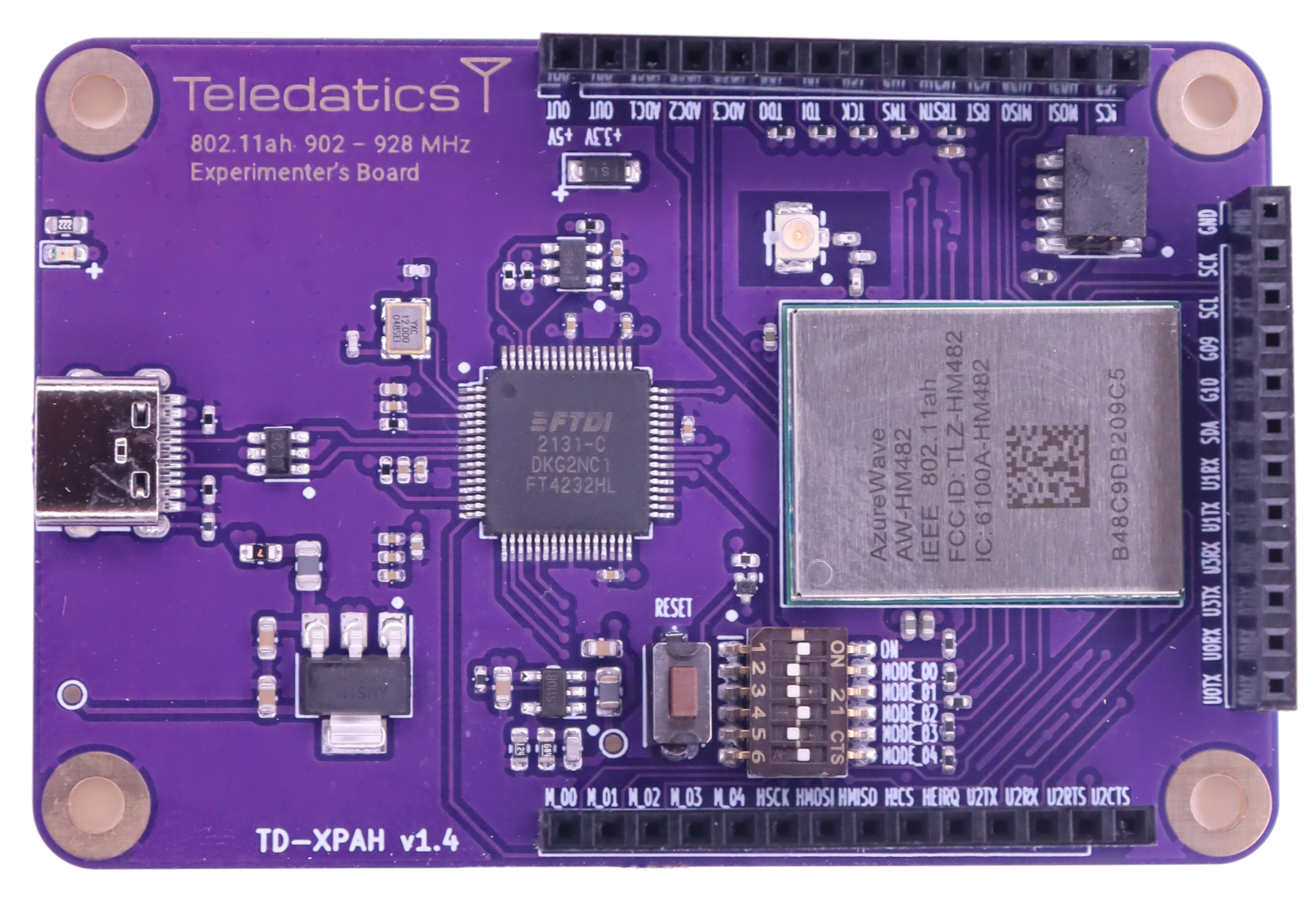TD-XPAH Platform

Introduction
This document is intended to help you set up the software development environment and the hardware for the Teledatics TD-XPAH development platform.
Background
The TD-XPAH development platform is an IEEE 802.11ah device that follows the Wi-Fi Alliance Halow™ standard. IEEE 802.11ah is a Wi-Fi protocol that uses lower frequencies than traditional Wi-Fi routers and clients. Halow™ provide a number of benefits:
- Longer range
- Lower power
- Many client connections per access point
While other long-range wireless solutions exist, many of these are not compatible with existing Internet standards & protocols and require translation software or hardware. IEEE 802.11ah is compatible with standard Internet protocols and does not need a gateway or other protocol translator.
Modes of Operation
The TD-XPAH can operate in one of two modes. These modes are known as host mode and standalone mode.
The modes of operation are configured by on-board DIP switch settings.

Host Mode
When configured for host mode, the TD-XPAH works as a USB Wi-Fi dongle. The host mode device must be connected by a USB cable to an external Linux system.
Host mode requires Linux drivers and firmware that enable the TD-XPAH to operate as a Linux Wi-Fi device. These drivers and firmware are available from the Teledatics github repositories.
When operating in host mode communication with the Linux kernel & operating system is through the USB cable.
Standalone Mode
When configured for standalone mode, the TD-XPAH boots an on-board operating system from flash memory. The standalone mode device draws only power from the USB connection.
Standalone mode does not need to communicate with external systems and runs as a self-contained device.
Three serial UART ports are available in standalone mode. These serial ports are exposed over the USB cable when the device is attached to a Linux system. The communication ports are not necessary for standalone mode operation. They are provided as a means of communicating with the standalone mode device during development and testing.